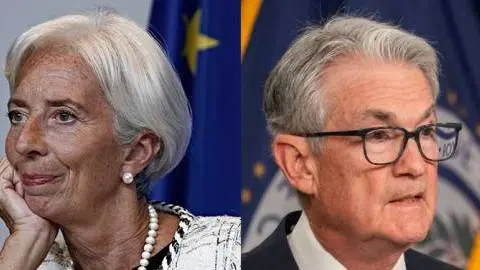Sweden’s Riksbank rate cut cycle nears its end as economy shows signs of life
The Riksbank has cut rates more aggressively than most over the past couple of years and we expect another cut on 28 January. But while 2024 was characterised by sluggish growth and elevated unemployment, a recent rebound in sentiment and housing activity hints at a better 2025. A global trade war remains a major risk, but for now, it looks like the Riksbank will cut rates just once more later this year, in either March or May. Anyway, there is a case for EUR/SEK volatility to recover from the current lows
We expect the Riksbank to cut rates twice more, including once this month
Sweden's interest rate-sensitive economy was hit harder than most by the series of rate hikes in 2022/23. But following 150 basis points of rate cuts, the Riksbank's policy easing is showing early signs of bearing fruit.
Sentiment indicators – be it consumer confidence, the purchasing managers indices, or the economic tendency survey – have shown steady improvement through 2024. The housing market is rebounding too. Remember that Sweden has a particularly high prevalence of variable-rate lending, which means that rate hikes hit more quickly than in countries, notably the US, where fixed-rate debt is more common. The same is true in reverse, and the swift delivery of rate cuts has boosted transactions, confidence and prices.
So far, that's not been widely reflected in the hard economic data. Unemployment is no longer rising but remains relatively high, settling structurally above the pre-Covid average. Household consumption bounced in November, though it's too early to say that this is the start of a trend.
In short, while the Riksbank is expecting a recovery in demand this year, it's still early days. Meanwhile, inflation has continued its recent tendency to undershoot Riksbank forecasts. CPIF excluding energy came in at 2% in December, below the Riksbank's most recent projection.
Add in the risks from US President Donald Trump’s trade war for Sweden’s relatively export-orientated economy, and we think there’s scope for both a cut next week and one more this year, ultimately taking the policy rate to 2%, slightly below the Riksbank’s forecast for the year.
Unemployment remains elevated

Is a weaker SEK that undesirable?
Both historical and implied EUR/SEK have continued to plummet to 2021 levels, with markets struggling to find a catalyst for divergence. One reason is the relatively similar conclusions for the impact of US tariffs – where the krona would just follow the euro in depreciating against the dollar as it has done for the past couple of months. The other reason is that both the Riksbank and European Central Bank have conveyed a sense of predictability around the next policy moves.
Markets are pricing in around 20bp for this meeting, and we therefore see some upside potential for EUR/SEK next week and some signs of life in volatility. More importantly, the lingering uncertainty around global trade should keep the Riksbank leaning dovish. That should allow markets greater flexibility to price in additional cuts in Sweden based on the direction of Trump’s protectionism.
The Riksbank spent the past two years lamenting a weak currency, but the decline in inflation, focus on growth and risks of a shock to exports may well make the Riksbank more tolerant of fresh SEK depreciation.
All in all, we see some upside risks for EUR/SEK, which we could see move back to 11.60 on the back of greater market volatility in the first weeks of Trump’s presidency.
Download
Download article
22 January 2025
Our analysts’ views on this week’s central bank meetings This bundle contains 6 ArticlesThis publication has been prepared by ING solely for information purposes irrespective of a particular user's means, financial situation or investment objectives. The information does not constitute investment recommendation, and nor is it investment, legal or tax advice or an offer or solicitation to purchase or sell any financial instrument. Read more
